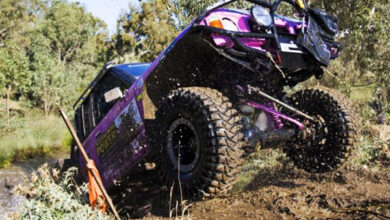Rock Climbing- Beginner’s Guide
Rock climbing is a challenging and rewarding sport that has gained popularity in recent years.
Climbing requires both physical and mental strength, as well as technical skill, making it a great way to stay fit while also testing your limits.
If you’re interested in trying rock climbing but don’t know where to start, this beginner’s guide will give you everything you need to know to get started.
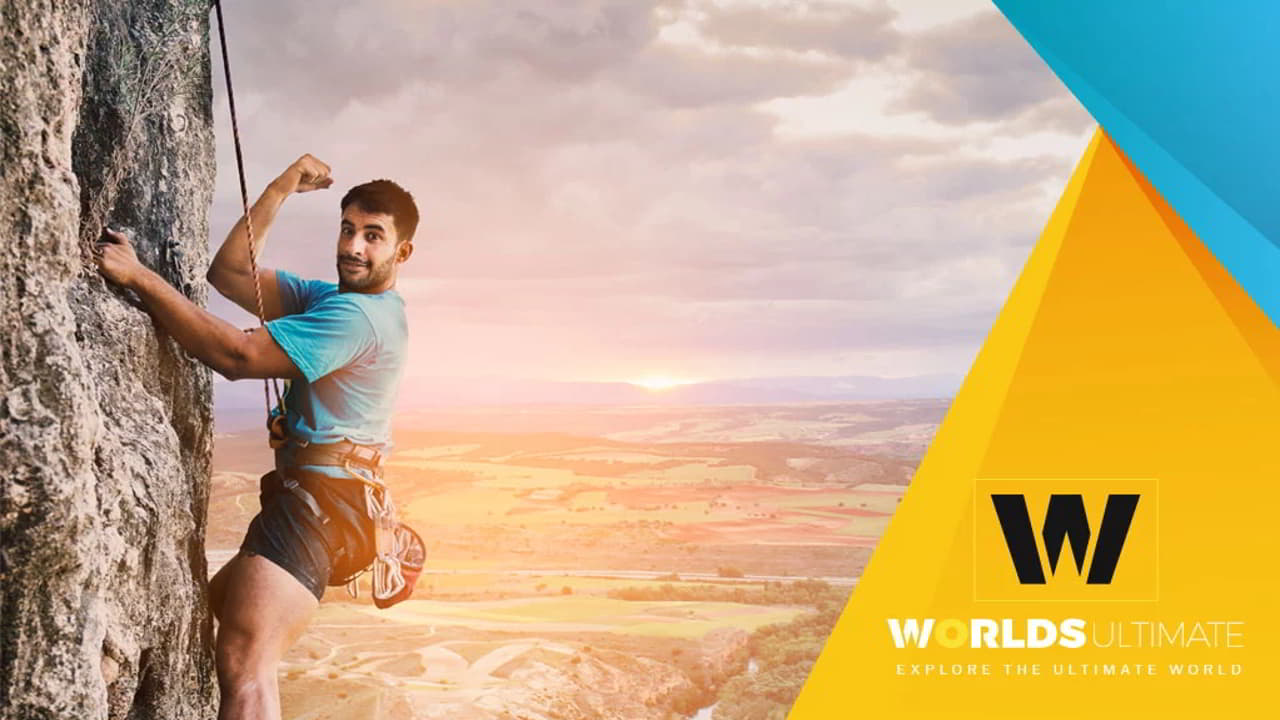
Rock climbing is an activity in which a doer climbs up, down, or across natural rock formations or artificial rock walls. The ultimate goal is to reach the summit of a formation or the endpoint of a pre-defined route without falling.
Table of Contents
Rock climbing is a mentally and physically demanding sport too, one that often tests a climber’s endurance, agility, strength, and balance along with mind control. It could be a dangerous sport.
A Sport of Risk
Rock Climbing is on the list of most dangerous sports in the world. It isn’t an ordinary sport. In mountaineering, you just need to be discrete and irrational from all others too.
Because it is not rational. Everyone doesn’t have the guts to defeat the fear of heights. Climbing is a very welcoming and accessible sport for a beginner.
Alex Johnson, a professional climber who is five times US national champion said that
The No. 1 most important thing for beginners to keep in mind is that, don’t feel intimidated. It’s easy to get discouraged and it happens to everyone—but the best way to improve is to keep trying.
Furthermore, Rock climbing is perfect for fitness and strength.
Research says that climbing is very beneficial in an aerobic workout, maintains nice cardiovascular fitness, and provides upper body strength.
Get Started with Sport Climbing
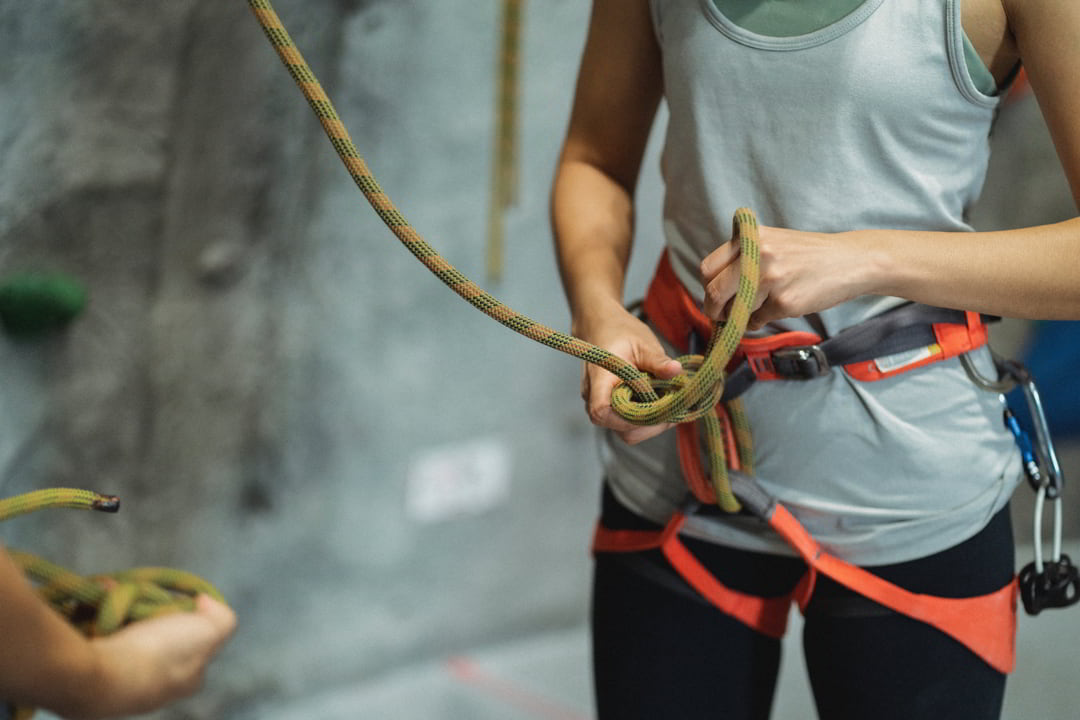
Rock climbing is itself a courageous and high-intensity activity that needs risk-taking capacity, expertise, and physical/mental fitness. Let’s dive into this adventurous and thrilling game:
Find a Climbing Gym or Outdoor Climbing Area
The first step to getting started with rock climbing is to find a climbing gym or outdoor climbing area.
Climbing gyms are a great place to start, as they provide a safe and controlled environment for learning the basics of climbing.
Outdoor climbing areas offer the added challenge of climbing on real rock but require more experience and equipment.
Get the Necessary Equipment
To start climbing, you’ll need some basic equipment, including climbing shoes, a harness, and a chalk bag.
Many climbing gyms offer rental equipment, so you don’t need to purchase your gear right away.
As you progress in your climbing abilities, you may want to invest in your equipment.
Learn the Basics of Climbing
Before you start climbing, you’ll need to learn some basic skills and techniques. Climbing involves a lot of different movements and body positions, so it’s important to learn proper technique from the beginning.
Related Pick: What Makes a Sport Extreme?
You can take a beginner’s climbing class at a climbing gym, or hire a climbing instructor for one-on-one instruction.
Start with Easy Climbs
When you first start climbing, it’s important to choose routes that are well within your ability level.
Start with easy climbs that are well within your physical and mental capabilities. This will help you build confidence and develop good climbing habits.
Climb with a Partner
Climbing is a social sport, and it’s always more fun to climb with a partner.
Climbing with a partner also adds an element of safety, as you can keep an eye on each other and provide support and encouragement.
Practice, Practice, Practice
The key to becoming a better climber is to practice regularly. Set aside time each week to climb, and focus on improving your technique and building your strength and endurance.
As you progress, you can start to challenge yourself with harder climbs.
Take Care of Your Body
Rock climbing is a physically demanding sport, and it’s important to take care of your body to prevent injuries.
Warm up properly before climbing, stretch regularly, and listen to your body. If you experience pain or discomfort, take a break and rest.
Learn about Safety
Safety is a critical aspect of rock climbing, and it’s important to learn about proper safety procedures and equipment.
This includes using a harness and rope system, belaying (managing the rope for your climbing partner), and understanding the risks involved with climbing.
Join a Climbing Community
Joining a climbing community can be a great way to meet other climbers, learn from more experienced climbers, and find new climbing partners.
Look for local climbing clubs, meetups, or online forums to connect with other climbers in your area. Rock climbing is an exciting and challenging sport that requires skill, strength, and mental focus.
With the right equipment, training, and practice, anyone can learn to climb and enjoy the thrill of reaching new heights.
So why not try it and see where your climbing journey takes you?
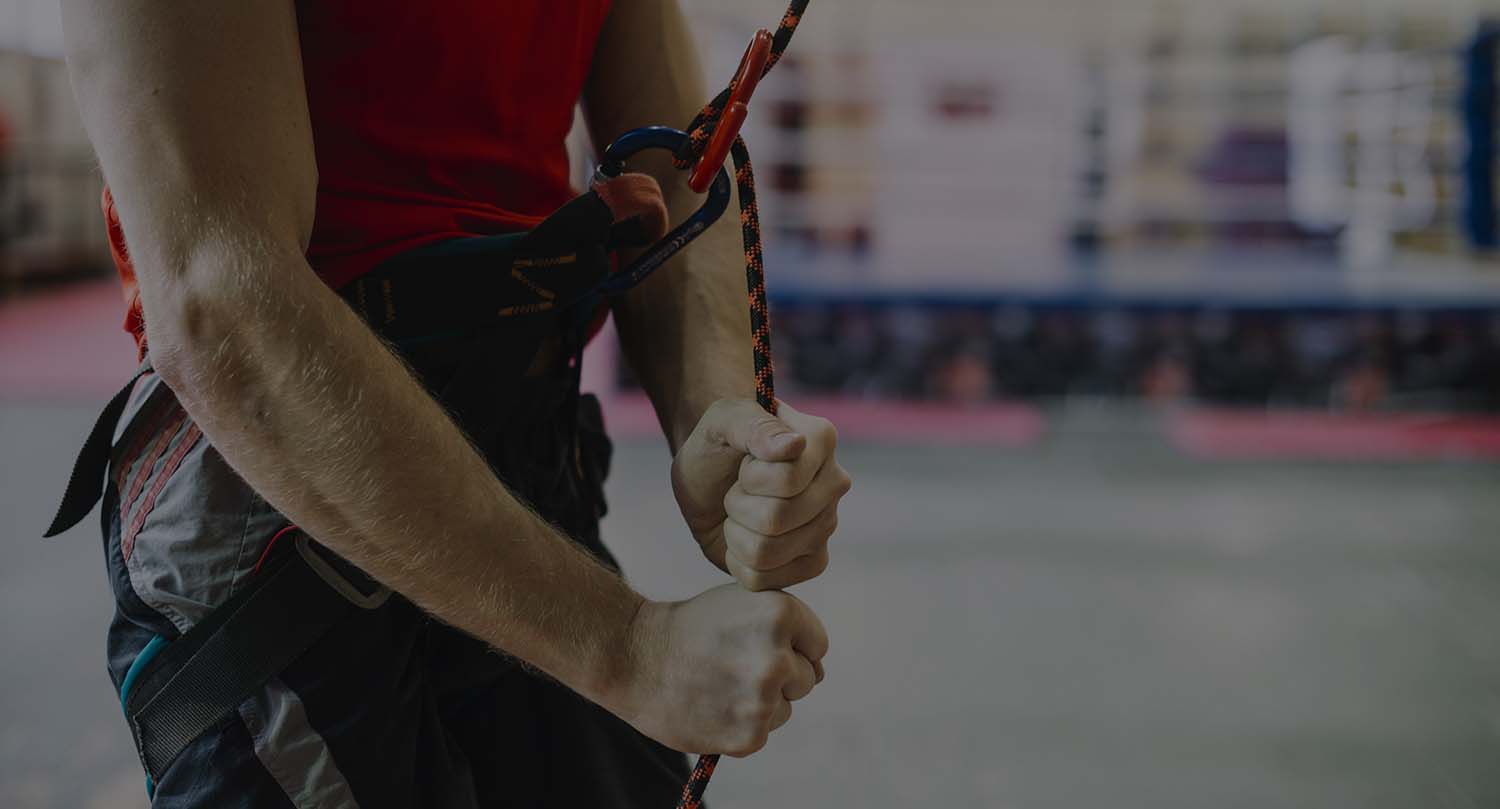
Types of Rock Climbing
Rock climbing can be broken down into two main types: indoor and outdoor rock climbing. Further types of rock climbing involve bouldering, big-wall climbing, lead/sport climbing, top-roping, and traditional climbing.
Indoor and Outdoor Rock Climbing
Any type of mountaineering that occurs within the boundaries of a building or other structure refers to Indoor Climbing.
This type of climbing allows climbers to climb at any time no matter what weather condition it is.
Indoor mountaineering is usually used for improving skills and practicing techniques. It is also known as general exercise.
Moreover, climbing which we practice outside the building known as Outdoor Climbing.
Bouldering

Bouldering involves climbing shorter routes without a rope, usually over large boulders.
It is safer and consequently more famous than the second one. With minimum gears, the route of this is more than 50feet high approximately.
Moreover, it is also less expensive than other climbers because of minimal gear. Again, climbing is all about moves and techniques in which repeated falling is expected.
If you are practicing Bouldering, you only require climbing shoes, athletic clothes, and a chalk bag. In outdoor, climbing crash pads are also required.
Bouldering is divided into different climbing sections according to difficulty levels:
Some route sections are V5, V3, V4, Vb, V2, and V14. The grading system varies from person to person. VB to V2 routes are for beginners.
Intermediate problems fall in V3 and V4 routes. Advanced problems are in V5 and above. In addition to all these, each progressive route is significantly more difficult than its predecessor, and the more difficult the route, the longer it takes.
Additionally, climbing on a rugged rock outside can make a difficult route even more difficult because of the physical wear and tear it induces on your fingers.
Big Wall Climbing
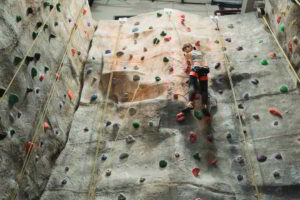
The big wall isn’t the most common but the most notorious climbing with a height range of a minimum of 1500 feet.
Routes of big walls take several days to reach a summit.
In addition to this, Climbers have to spend nights hanging a hundred feet high.
Big Wall mountaineering is not for those people who are weak-hearted. Moreover, proper precautions are also needed which can be done only with the investment in proper gear.
Lead/Sport Climbing

An extremely versatile manner of climbing that offers a variety of route lengths with several forms of difficulties.
Sports climbers focus on moves and techniques eventually to get to their destinations.
It is a more technical form of climbing that involves longer routes with pre-placed bolts for safety.
In such type of climbing, falling is expected and it is, therefore, planned accordingly. Climbers may fall several times in accomplishing the goal of ending.
Furthermore, the use of ropes in lead and sport climbing is a little bit different than in other climbers. There are many bolted anchors in the wall.
So, these bolted anchors also inform climbers about pre-planned routes. These are also attached to each of the bolted anchors as the climber sends the rock.
Moreover, It is also the responsibility of the climber to loop the rope through carabineer systems called quick-draws.
Top-Roping
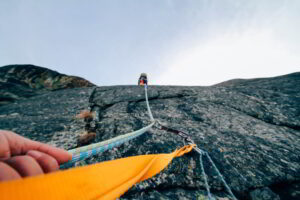
As the name shows, the use of rope is involved in this climbing. Whereas, ropes are also always there to catch you while slipping and falling.
Moreover, top rope climbing always requires the assistance of an extra person, showcasing the art of Belaying.
An extra man is responsible for assisting your rope and descending you as you descend your route. Friction devices such as Gri-Gri or an ATC are used to deal with slipperiness.
The auto-Belay device is also present which acts as an anchor and serves to catch you if you fall. In short, top-roping is the best way for beginners to get used to rock climbing. It can also be a preferred way for climbers to learn and practice a new route.
Traditional Climbing
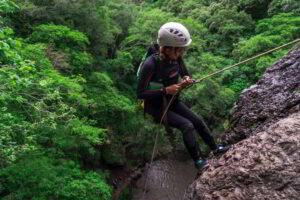
Trad climbing, also known as traditional climbing, is a form of climbing where the climber places their protection as they climb, using specialized gear.
Traditional climbing is all about holistic experience and mental games that help in climbing. Whereas other climbing also requires physical strength.
Routes are set traditionally, nothing is pre-planned, whereas the climber is responsible for inserting protection bolts into the wall.
This means that traditional climbing is hard because the climber has to pick all the gear along with him/her.
Just like top-roping and sport climbing, traditional climbers also need a belay partner to feed them a rope and lower them down.
Techniques of Mountain Climbing
However, Mountaineering isn’t only about grabbing and holding off the mountain’s edges to climb the summit.
It requires quite efficient and proper skills and techniques to avoid any misfortune accident.
Climbing high needs a more cautious approach as the knowledge of high altitude climbing and high altitude sickness is a must.
As well as the knowledge of proper climbing techniques and the usage of specialized climbing equipment is also crucial for the safe completion of expeditions.
Some basic techniques are listed below:
| FOOTWORK | HANDHOLDS | BODY POSITION |
|
|
|
Terms of Climbing
- Aid Climbing (climb while adding devices to a rock face to assist in the ascent)
- Anchor
- Belay (a rope setup held by a climber’s partner to catch the climber when he falls or lower him down after he finishes his ascent)
- Beta
- Bolt
- Bump (quickly moving a hand or foot from one temporarily useful hold to another)
- Carabiner ((Biner) a metal coupling link with a safety closure that can open and close, used to hold gear or as anchors for belaying)
- Campus (climbing without using your legs or feet)
- Crimp (a tech in which a climber presses her fingertips flat on the small surface of a hold and raises her knuckles, often also placing her thumb over the top of his/her index finger and partially over her middle finger)
- Dyno (jumping from one hold to the next, losing all contact with the rock while in mid-jump)
- Figure 8 (a knot used to secure a climber’s harness to the belay rope)
- Flag (holding the leg out to the side to maintain balance in a certain position on the wall)
- Flash (successfully send a route on the first attempt after having received some kind of beta)
- Jug (a big, easy-to-grab hold)
- Match
- On-Sight (to successfully send a route on the first attempt without having received any prior advice)
- Red-Point (complete while placing protection on a route after many unsuccessful attempts)
- Send (completing route with safety)
- Sit-Start (to start a climb while sitting on the ground)
- Spot (waiting in preparedness beneath a boulderer to ease his fall)
- Top-Out (Help in completing a route by ascending over the top of the structure)
- Traverse
Mountain Equipment for Rock Ascent
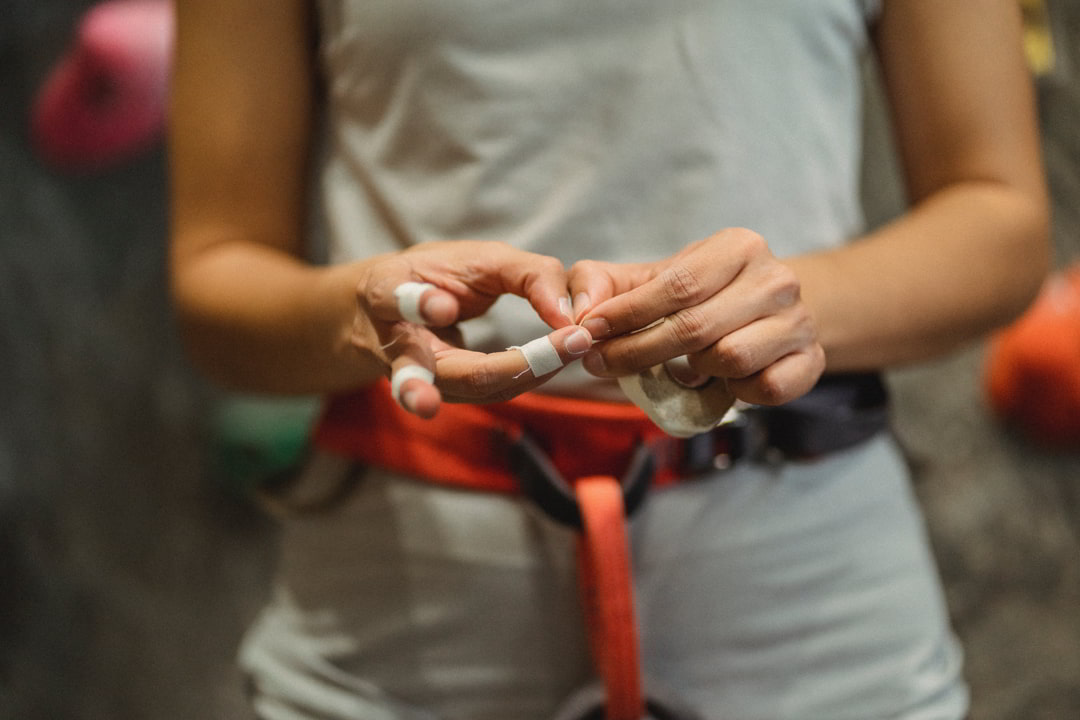
First, It majorly depends on the type of climbing but general gears are listed below:
- Harness
- Rope(s)
- Belay System
- Helmet
- Chalk
- Climbing Shoes
- Slings
- Quick Draws
- Nuts and Camping Devices
- Ice Axes
- Crampons
- Climbing Shoes
- Rock climbing pants
Every climbing trip is different and certain climbing gadgets are required in each route.
Click here to read Top Tips for Selecting the Right Climbing Gear
What is the Best Time for going to Rock Mountaineering?

A neutral climate is also essential for Outdoor Climbing.
Because extreme weather makes it difficult to accomplish the route safety.
Spring, summer, and fall offer the best weather. In the height of summer, surfaces retain heat and make it difficult to climb on.
While in winter the cold can hinder a climber´s ability to proceed up or across a surface.
But for enthusiast climbers, every time is perfect for mountaineering.
Why you should Hire a Guide?
It is a great way to progress your climbing skills with little help from a guide. However, hiring a guide gives you a chance to take a more challenging route and enhances your experience on rocks too.
Guide’s expertise can be very beneficial in local areas. A guide enhances your overall safety by accessing to local areas and getting insights into specific regions.
10 Best Spots in the World to Practice Climbing
- Chamonix – Mont-Blanc (France): The tallest mountain in Western Europe.
- Yosemite National Park (USA): Renowned destination in the United States with impeccable granite.
- Catalonia / Catalan Pyrenees (Spain): “Birthplace” of Spanish rock climbers. Great arrays of climb lie in Catalonia.
- Cochamo Valley (Chile): Incredible South American destination for Big Wall Climbing.
- Paklenica National Park (Croatia): An intriguing and satisfying spot with several days of routes.
- Kalymnos (Greece): Climbing destination for rock lovers.
- Krabi (Thailand): Thai culture brings this climbing “Mecca” to life, and having a guide take you across the unique limestone is truly incredible.
- British Columbia (Canada): Fully loaded with igneous surfaces and wilderness locations, the climbs in western Canada are unlike any other.
- Verdon Gorges (France): This spot is an absolute view for climbing with pillars and long walls.
- Sardinia (Italy): This Island is packed with beautiful climbing punches.
Top 10 Rock Climbers
- Chris Sharma
- Steph Davis
- Catherine Destivelle
- Dean Potter
- Alex Honnold
- Lynn Hill
- Tommy Caldwell
- Beth Rodden
- John Long
- Dave Graham
Here are some Statistics Related to Free Climbing
- In the United States, indoor climbing gym membership has increased by 10% annually over the past decade. (Climbing Business Journal)
- Rock climbing injuries are on the rise, with an average of 3.28 injuries per 1,000 hours of climbing. (International Journal of Environmental Research and Public Health)
- The most common types of rock climbing injuries are finger injuries, followed by shoulder injuries. (International Journal of Environmental Research and Public Health)
- In 2019, the climbing industry generated $1.1 billion in revenue in the United States. (Statista)
- The United States has the highest number of rock climbing gyms in the world, with over 500 gyms as of 2020. (Climbing Business Journal)
- Approximately 11 million people in the United States participated in climbing activities in 2020. (Statista)
- The highest number of deaths related to rock climbing occurs in the United States and Europe. (International Journal of Environmental Research and Public Health)
